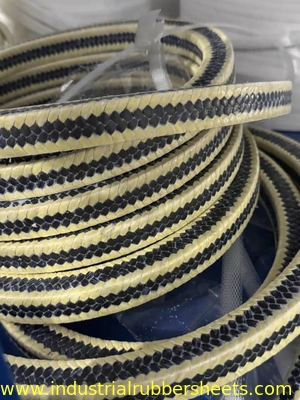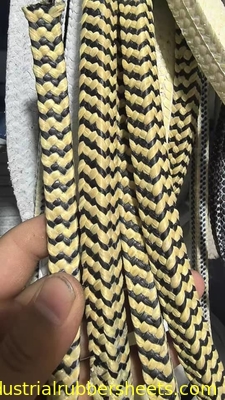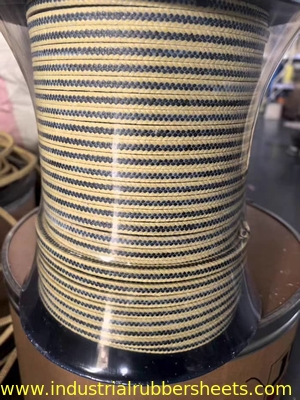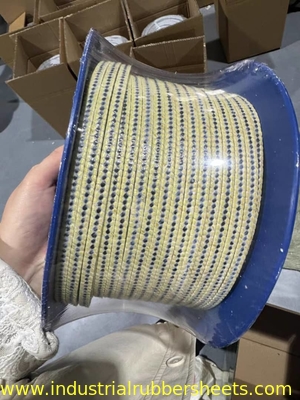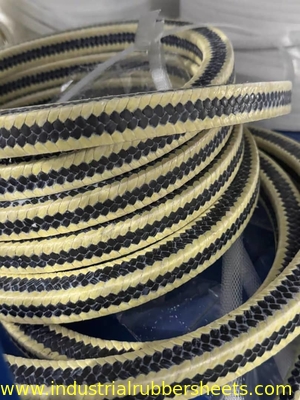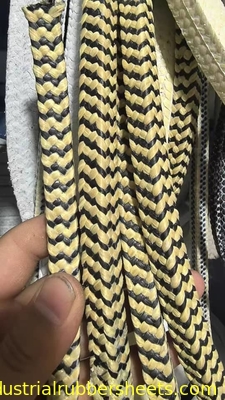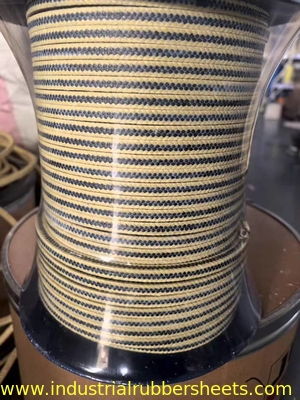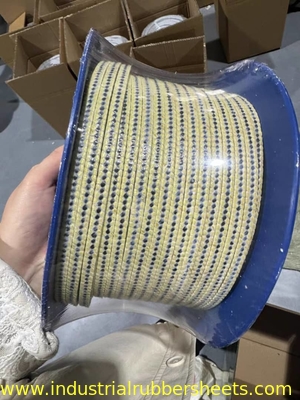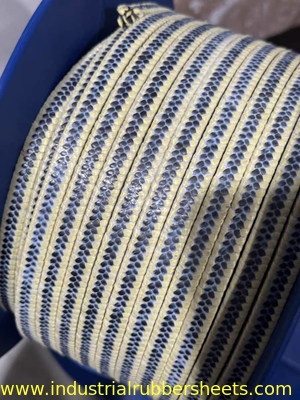Todos los productos
-
Hoja de goma industrial
-
Hoja de la goma de silicona
-
hoja de goma da alta temperatura
-
Protuberancia del tubo del silicón
-
Lavadoras de goma de silicona
-
Acoplamiento del poliuretano
-
Embalaje de PTFE
-
Cinta de la junta de PTFE
-
Tela revestida de la fibra de vidrio de PTFE
-
Malla de PTFE
-
Tubería de PTFE
-
Soportes de choque de goma
-
Hoja plástica coloreada
-
Rod plástico de nylon
-
Papel de prueba de aceite
-
Hoja de la espuma de EPDM
-
banda transportadora del pvc
-
Sello de aceite industrial
-
Pad de corte de PTFE
Persona de Contactar Ahora :
Shiguo Han
Número de teléfono :
0086 13930664330
WhatsApp :
+8613930664330
Kevlar Gland Packing The Optimal Solution for Chemical Resistance and Abrasion Protection in Demanding Applications
| Lugar de origen | Porcelana |
|---|---|
| Nombre de la marca | 3A Rubber |
| Certificación | ISO9001 |
| Número de modelo | 3A3005 |
| Cantidad de orden mínima | 20 kgs |
| Precio | USD15.00 |
| Detalles de empaquetado | Embalaje en rollos, cartones y palets |
| Tiempo de entrega | 7-15 días después de recibir el pago del comprador |
| Condiciones de pago | L/C, D/A, D/P, T/T, Western Union, Moneygram |
| Capacidad de la fuente | 100000kgs/month |

Póngase en contacto conmigo para muestras y cupones gratis.
WhatsApp:0086 18588475571
En WeChat: 0086 18588475571
¿ Qué pasa?: sales10@aixton.com
Si tiene alguna preocupación, ofrecemos ayuda en línea las 24 horas.
xDatos del producto
| Estructura | trenza del enrejado | Resistente al agua | Sí |
|---|---|---|---|
| Resiliencia | Bien | Longitud | los 6-50m |
| No tóxico | Sí | Embalaje | Carton, caja de madera |
| Presión | 0 ~ 4MPA | Temperatura de trabajo | -150℃-+250℃ |
| Rango de temperatura | -200 °C a +260 °C | valor de pH | 0-14 |
| Calidad | Grado del FDA | Caza de focas | Bien |
| Resistente a la abrasión | Sí | Prensa de trabajo | 2-20Mpa |
| Rango de ph | 0-14 | ||
| Resaltar | Kevlar gland packing chemical resistance,PTFE packing abrasion protection,Kevlar gland packing demanding applications |
||
Puede marcar los productos que necesita y comunicarse con nosotros en el tablero de mensajes.
Descripción de producto
Kevlar Gland Packing - The Optimal Solution for Chemical Resistance and Abrasion Protection in Demanding Applications
Product Specifications
| Attribute | Value |
|---|---|
| Structure | lattice braid |
| Water Resistant | Yes |
| Resilience | Good |
| Length | 6-50m |
| Non-Toxic | Yes |
| Packing | Carton, Wooden Box |
| Pressure | 0~4mpa |
| Working Temperature | -150℃-+250℃ |
| Temperature Range | -200°C to +260°C |
| Ph Value | 0-14 |
| Quality | FDA grade |
| Sealing | Good |
| Abrasion Resistant | Yes |
| Working Press | 2-20Mpa |
| Ph Range | 0-14 |
Kevlar gland packing is a type of mechanical sealant used to control leakage around rotating or reciprocating shafts in equipment like pumps, valves, and mixers. This specific application, where the packing is compressed in a "gland" or "stuffing box," is why it's often called gland packing.
It consists of braided fibers made from Kevlar® (a para-aramid synthetic fiber by DuPont), renowned for its incredible strength-to-weight ratio, thermal stability, and resistance to abrasion. It is a direct and superior replacement for older asbestos-based packings.
Why Choose Kevlar for Gland Packing?
Kevlar's unique properties make it exceptionally well-suited for the demanding environment of a gland stuffing box:
- Exceptional Strength & Abrasion Resistance: Its high tensile strength (about 5x that of steel by weight) makes it highly resistant to extrusion under pressure and wear from shaft movement. This translates to a much longer service life than many traditional materials, especially in abrasive services like slurries or fluids with suspended solids.
- High-Temperature Performance: It can operate continuously at temperatures up to 288°C (550°F), with short-term spikes up to 427°C (800°F). This makes it ideal for applications involving hot water, steam, heat transfer fluids, and other high-temperature processes.
- Chemical Resistance: It is resistant to a wide range of chemicals, including most solvents, oils, and mild acids/alkalis. (Note: It is not recommended for prolonged exposure to strong mineral acids or strong caustics).
- Low Shaft Wear: The inherent lubricity of Kevlar fibers creates less friction against the shaft or sleeve, minimizing wear and power consumption. This protects expensive equipment components from damage.
- Non-Sparking: This is a critical safety feature in explosive or flammable atmospheres, where a spark from metallic packings could be catastrophic.
Common Constructions and Impregnations
Pure Kevlar braid is often enhanced with lubricants to improve its performance:
- Kevlar/PTFE Impregnated: The most common type. Impregnated with Polytetrafluoroethylene (PTFE or Teflon®) for outstanding chemical resistance and extremely low friction. Excellent for a vast range of chemical services.
- Kevlar/Graphite Impregnated: Infused with graphite for superior performance in high-temperature steam and air applications. The graphite provides excellent lubricity and thermal conductivity.
- Kevlar with Synthetic Lubricants: Impregnated with high-temperature grease or other lubricants for general-purpose use with water, oils, and other media.
Typical Applications
Kevlar gland packing is used across countless industries to seal:
- Centrifugal Pumps: For hot water, chemicals, hydrocarbons, and abrasive slurries.
- Rotary Pumps: In chemical transfer and hydraulic systems.
- Valves: Especially steam valves, gate valves, and control valves.
- Agitators and Mixers: Where shaft movement and abrasive media are present.
- Marine Equipment: Onboard ships for various pump and valve applications.
Installation & Break-In Procedure (Critical Steps)
Proper installation is key to maximizing performance and life.
- Clean Thoroughly: Remove all old packing rings and clean the stuffing box and shaft/sleeve.
- Measure & Cut: Measure the shaft diameter and stuffing box bore. Cut new rings on a 45-degree angle (skive cut). Stagger the joints 90° or 180° around the shaft for each ring.
- Install Carefully: Use a split mandrel or proper sizing tool to avoid twisting or deforming the rings. Seat each ring firmly using a tamping tool before adding the next.
- Initial Gland Adjustment: Hand-tighten the gland follower nuts evenly.
- The Break-In Period (Most Important Step):
- Start the equipment.
- Gradually tighten the gland follower in small increments (e.g., 1/6 of a turn) every 10-20 minutes.
- Allow a slight weep of fluid (a few drops per minute) to cool and lubricate the packing.
- Never overtighten to stop all leakage immediately, as this will generate excessive friction heat, damaging both the packing and the shaft.
- Final Adjustment: After the packing has run-in (several hours), adjust for minimal controlled leakage.
Advantages vs. Disadvantages
| Advantages | Disadvantages |
|---|---|
| Long service life, reducing downtime | Higher initial cost than basic packings |
| Reduces shaft/sleeve wear | Requires a proper break-in procedure |
| Excellent for abrasive services | Not suitable for strong acids/alkalis |
| High-temperature capability | Can be damaged by UV light (not an issue in a gland) |
| Non-sparking and safe for hazardous areas | |
| Replaces hazardous asbestos packing |
Conclusion
Kevlar gland packing is a high-performance sealing solution designed for demanding conditions where standard packings like graphite, flax, or pure PTFE fail. Its superior strength, temperature rating, and abrasion resistance make it an excellent choice for extending equipment life and reducing maintenance costs in challenging applications across chemical processing, power generation, mining, and water treatment industries.
Always consult the manufacturer's guidelines for compatibility with your specific fluid, temperature, and pressure.
Productos recomendados



